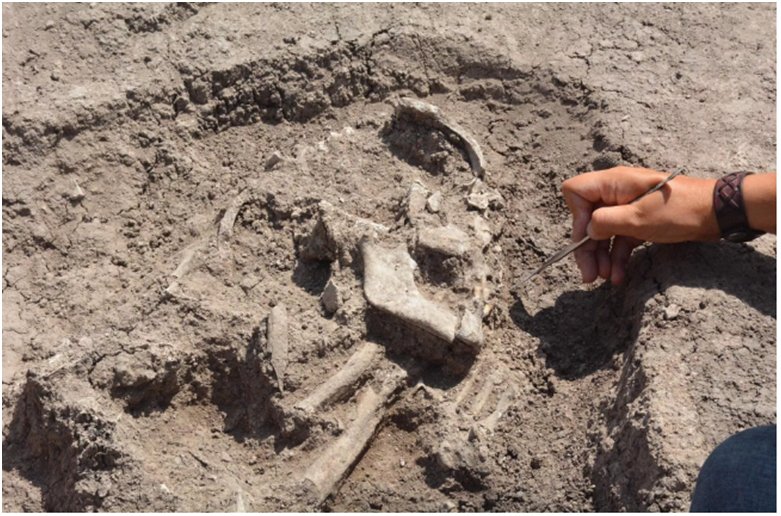An 8,500-year-old human skeleton and musical instrument were found in the garden of the apartment
An approximately 8,500-year-old human skeleton and a three-hole musical instrument were found during an excavation in the garden of an apartment in the Bahçelievler District of Bilecik.
This place, which is likely to be one of the first points of human settlements in Western Anatolia, was discovered for the first time when a resident of Bilecik reported some ceramic pieces found here to the Archeology Museum.

As a result of two years of work, 11 human skeletons estimated to be 8,500 years old and musical instruments with three holes from the same period were found in the garden of the apartment.
Archaeologists also found grains such as lentils, barley and vetch, as well as varieties of wheat used to make bread and pasta.
Stating that this year’s most important find is a three-hole wind instrument, Fidan added: “We also found religious objects such as ornamented boxes made of terracotta, human-shaped amulets and animal figures during the excavations. In addition, a skull we found in the courtyard gives us information about the religious life of that period.”

Fidan said, “We think that this musical instrument, which has 3 holes, is a part of a musical instrument that makes sounds and changes sound notes. He also stated that the tool can be used thanks to an appliqué mouthpiece attached to this piece.
The head of the excavation, Assoc. ErkanFidan said, “The human skeletons found in the excavation area belong to the oldest adolescent people in the Neolithic Age in Western Anatolia.
“Fidan stated that “the human communities that came here 9 thousand years ago and stayed here for about a thousand years, unearthed the first villages.” In addition, Fidan said that people living in the region who know how to do agriculture also domesticated animals.

Fidan also noted that they found other human skeletons in the excavation area and that these skeletons were examined in detail at the Hacettepe University Anthropology Department Laboratory.
He also stated that they aim to learn a lot about these people in the near future, about their age, gender, illness and the food they eat.
The finds found in the excavation will be exhibited in the Bilecik Archeology Museum after the restoration and research works are completed.





